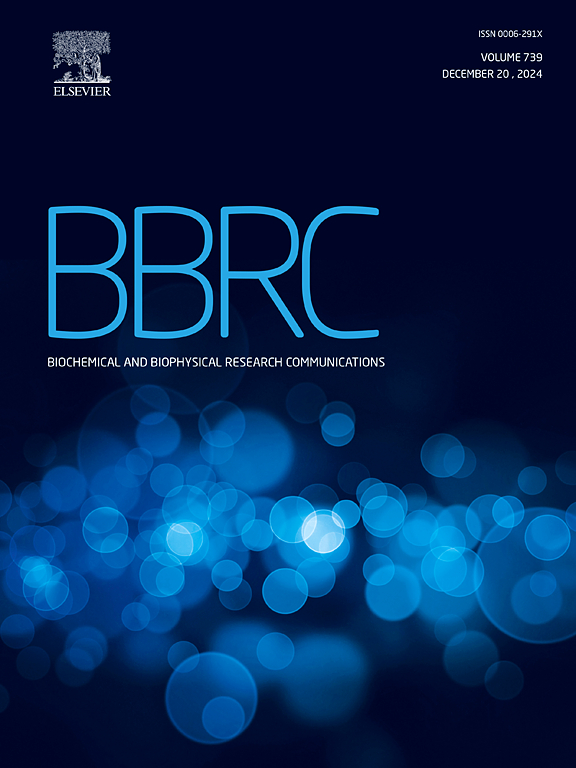DCAF8L1 induces branching morphogenesis and hollow acinar structures remodeling of MCF10A cells in 3D culture by upregulating DDR1
IF 2.5
3区 生物学
Q3 BIOCHEMISTRY & MOLECULAR BIOLOGY
Biochemical and biophysical research communications
Pub Date : 2025-04-10
DOI:10.1016/j.bbrc.2025.151713
引用次数: 0
Abstract
Mammary morphogenesis is a highly coordinated process involving cellular differentiation, proliferation, and organization to form a bilayered epithelial network of ducts and lobules within the stromal matrix. Here, we identified the DDB1 and CUL4 associated factor 8-like 1(DCAF8L1) as a novel regulator of mammary morphogenesis. To investigate its role, we established stable DCAF8L1-expressing MCF10A cell lines, which normally lack DCAF8L1 expression. Overexpression of DCAF8L1 enhanced cell proliferation, migration, and induced branching morphogenesis and vacuolar structure assembly in three-dimensional (3D) culture. Subsequently, transcriptomic and proteomic analyses identified the discoidin domain receptor tyrosine kinase 1 (DDR1) as a key downstream effector of DCAF8L1. Further investigation revealed that DCAF8L1 upregulates DDR1, leading to activation of the Notch signaling pathway. These findings suggest that DCAF8L1 drives mammary branching morphogenesis and vacuolar structure assembly via DDR1-mediated Notch activation in 3D-cultured MCF10A cells.
DCAF8L1通过上调DDR1诱导3D培养MCF10A细胞的分支形态发生和空心泡结构重塑
乳腺形态发生是一个高度协调的过程,包括细胞分化、增殖和在基质内形成双层上皮网络的导管和小叶。在这里,我们发现DDB1和CUL4相关因子8-like 1(DCAF8L1)是乳腺形态发生的一种新的调节因子。为了研究其作用,我们建立了稳定表达DCAF8L1的MCF10A细胞系,这些细胞系通常缺乏DCAF8L1的表达。在三维(3D)培养中,DCAF8L1的过表达增强了细胞的增殖、迁移,并诱导了分支形态发生和液泡结构组装。随后,转录组学和蛋白质组学分析发现盘状蛋白结构域受体酪氨酸激酶1 (DDR1)是DCAF8L1的一个关键下游效应体。进一步的研究发现,DCAF8L1上调DDR1,导致Notch信号通路的激活。这些发现表明DCAF8L1通过ddr1介导的Notch激活在3d培养的MCF10A细胞中驱动乳腺分支形态发生和液泡结构组装。
本文章由计算机程序翻译,如有差异,请以英文原文为准。
求助全文
约1分钟内获得全文
求助全文
来源期刊
CiteScore
6.10
自引率
0.00%
发文量
1400
审稿时长
14 days
期刊介绍:
Biochemical and Biophysical Research Communications is the premier international journal devoted to the very rapid dissemination of timely and significant experimental results in diverse fields of biological research. The development of the "Breakthroughs and Views" section brings the minireview format to the journal, and issues often contain collections of special interest manuscripts. BBRC is published weekly (52 issues/year).Research Areas now include: Biochemistry; biophysics; cell biology; developmental biology; immunology
; molecular biology; neurobiology; plant biology and proteomics

 求助内容:
求助内容: 应助结果提醒方式:
应助结果提醒方式:


